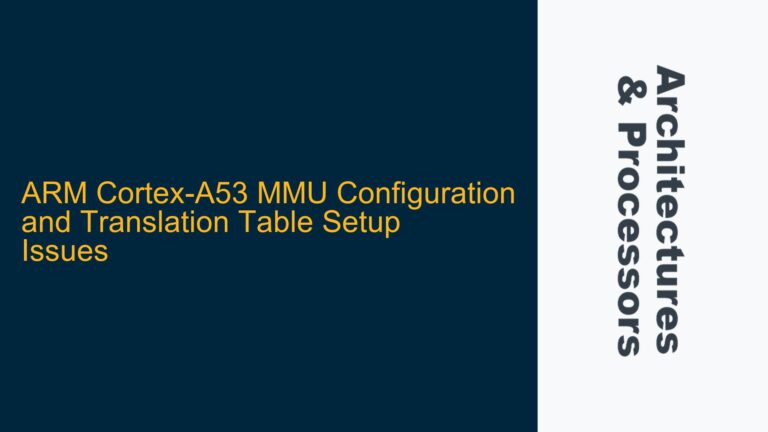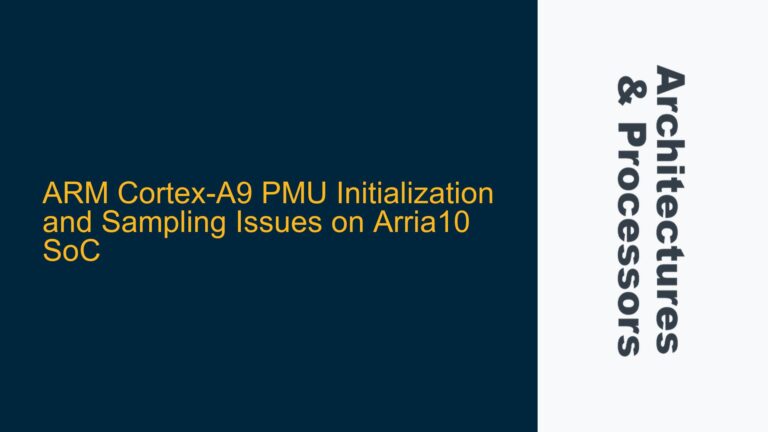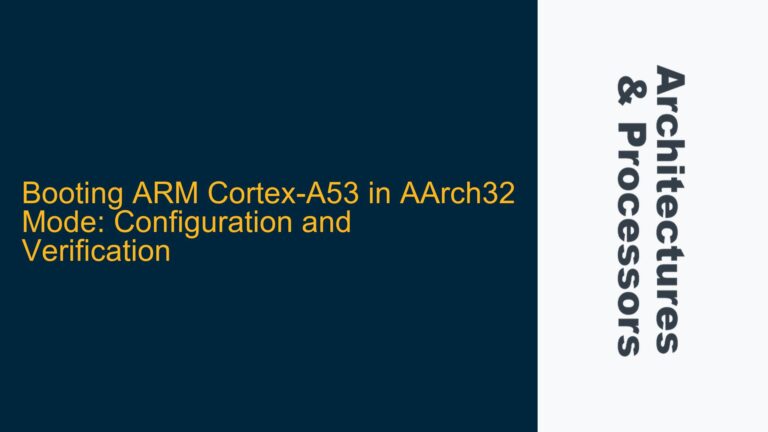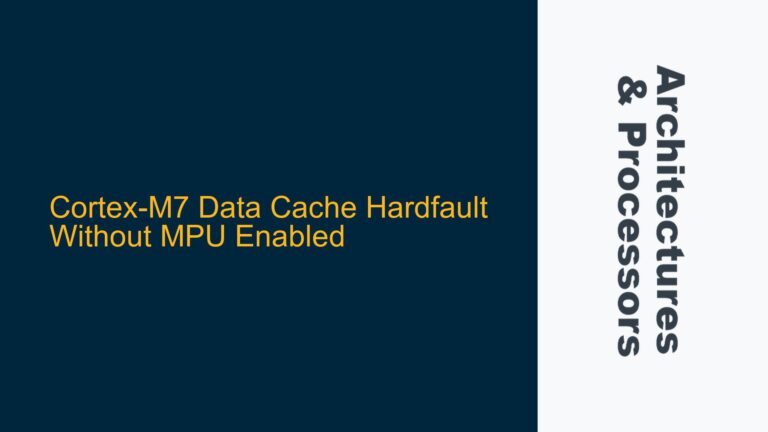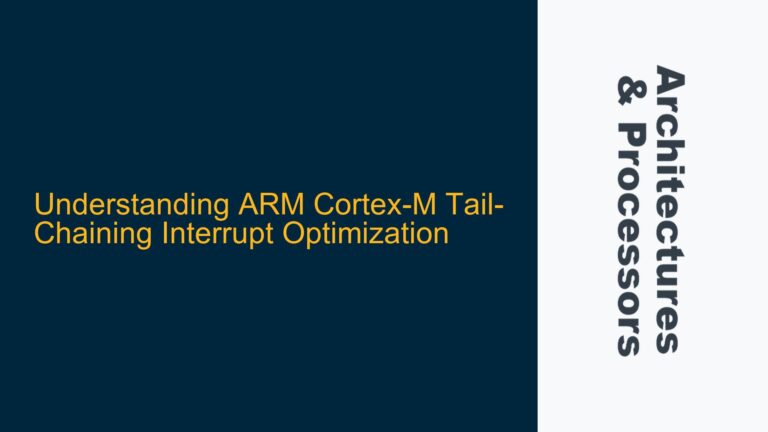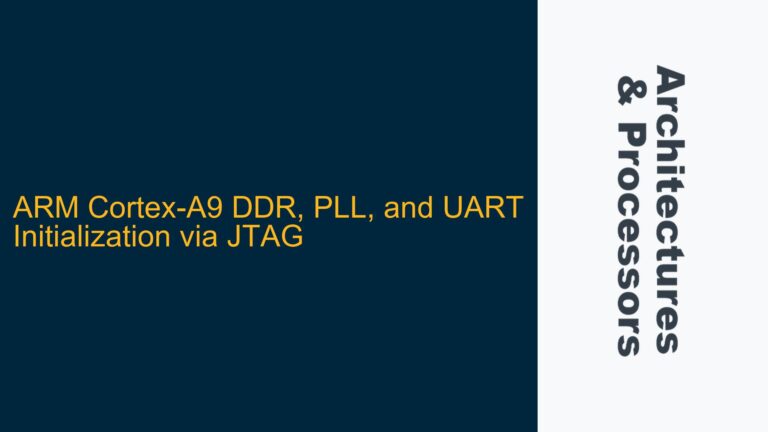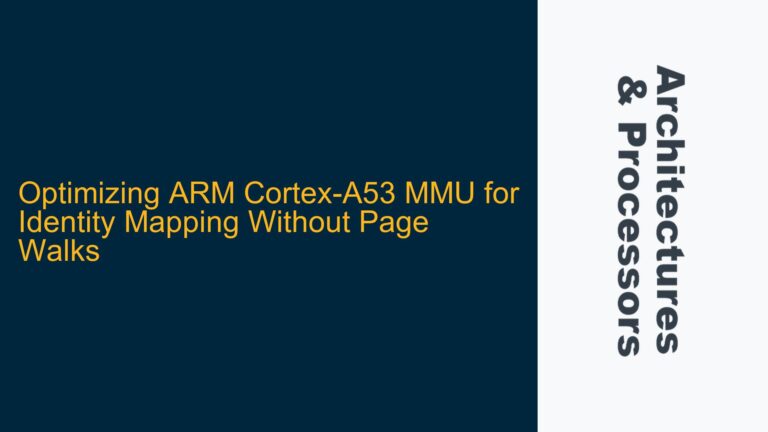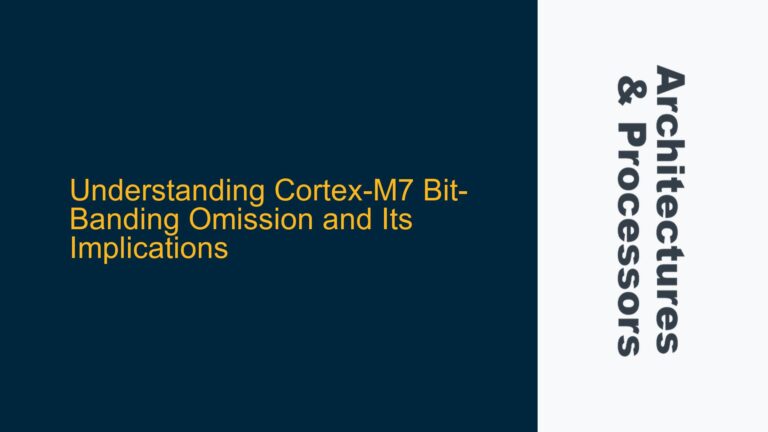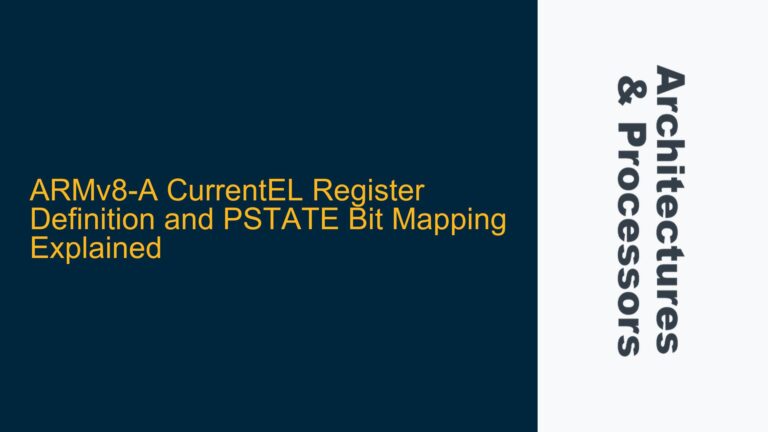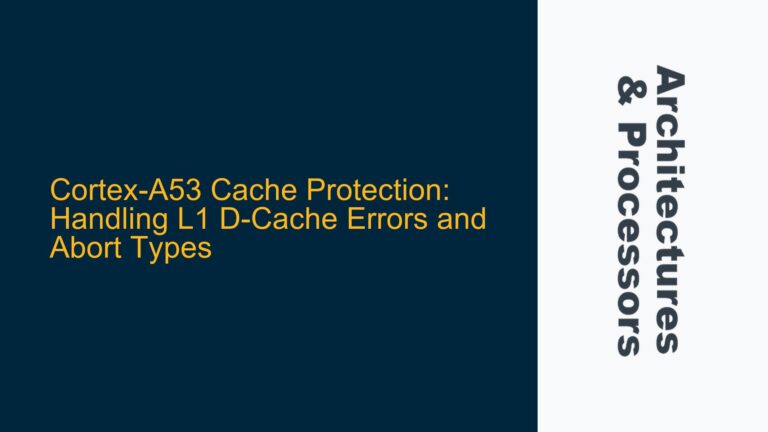ARM Cortex-A53 MMU Configuration and Translation Table Setup Issues
ARM Cortex-A53 MMU Translation Table Misconfiguration in Flat-Mapped Memory The ARM Cortex-A53 processor, a widely used 64-bit core in embedded systems, relies heavily on the Memory Management Unit (MMU) for virtual-to-physical address translation and memory protection. A critical aspect of MMU configuration is the setup of the translation table, which defines memory attributes and access…
